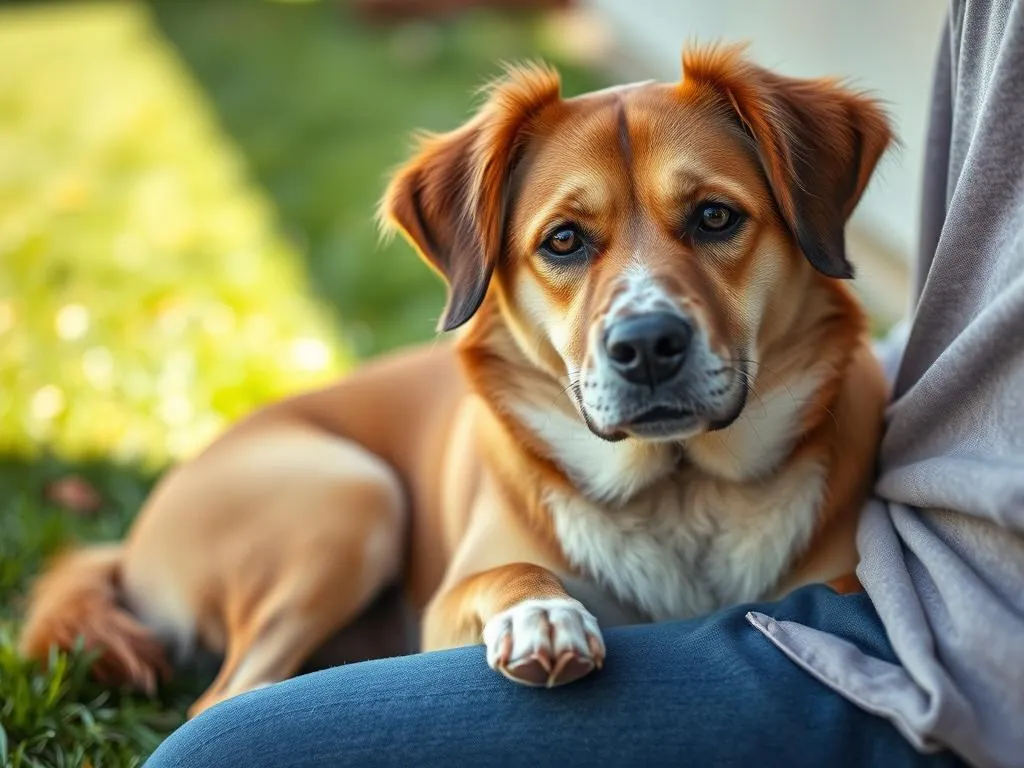
Losing a beloved pet can be one of the most challenging experiences in life. Our dogs are more than just animals; they are family members, companions, and sources of unconditional love. The emotional impact of saying goodbye to your dog can be profound, and it is important to acknowledge and navigate this process with care and compassion. Here’s a guide on how to say goodbye to your dog that aims to support you through this difficult time.
Understanding the Grieving Process
The Bond Between Humans and Dogs
The relationship between humans and dogs is unique and deeply rooted. Dogs have an incredible ability to understand our emotions and provide comfort, making them integral to our lives. They are not just pets; they offer companionship, loyalty, and joy. This bond creates a strong emotional attachment, which is why the loss feels so devastating.
Stages of Grief
When faced with the loss of a dog, it’s common to experience various stages of grief, similar to those outlined in Elisabeth Kübler-Ross’s model. These stages include:
- Denial: Refusing to accept the reality of the situation, often accompanied by disbelief.
- Anger: Feeling frustrated or angry at the situation, which may extend to the veterinary staff or even oneself.
- Bargaining: Attempting to negotiate for a better outcome, wishing for more time or a different fate.
- Depression: A deep sense of sadness and sorrow that can be overwhelming.
- Acceptance: Coming to terms with the loss and finding a way to move forward.
Understanding these stages can help you recognize that your feelings are valid and part of the healing process.
The Importance of Acknowledging Grief
Acknowledging your grief is essential for healing. It’s natural to feel sadness, anger, or confusion when losing a pet. Openly expressing these feelings can be incredibly therapeutic. Don’t hesitate to seek support from friends, family, or professionals who understand the emotional toll of losing a beloved companion.
Preparing for the Goodbye
Recognizing the Signs of Aging and Illness
As dogs age or face serious health issues, they may show signs that indicate they are nearing the end of their lives. Common signs include:
- Decreased appetite
- Difficulty standing or walking
- Increased lethargy
- Changes in sleeping patterns
- Uncharacteristic behavior, such as hiding or seeking solitude
Consulting with a veterinarian can provide clarity on your dog’s condition and help you understand the right time to say goodbye.
Making the Decision
Deciding to say goodbye is one of the hardest choices a pet owner can make. Factors to consider include your dog’s quality of life, pain management options, and overall well-being. Emotional preparation is crucial; take the time to reflect on your dog’s experiences and what they mean to you.
Planning for the Goodbye
When the time comes, you have options for how to say goodbye to your dog. You can choose to do this at home or at the veterinary clinic. Discussing pet euthanasia with your veterinarian can provide you with information about the process and help you make the best decision for your beloved companion.
Saying Goodbye
Creating a Comfortable Environment
In your dog’s final moments, creating a comforting environment is key. Ensure they are in a familiar space, surrounded by items that bring them comfort, such as their favorite blanket or toy. Your presence can also provide reassurance as they transition.
Holding a Farewell Ceremony
A simple farewell ceremony can be a beautiful way to honor your dog’s life. You might consider:
- Writing a letter to your dog, sharing your memories and feelings.
- Creating a scrapbook or photo album filled with cherished moments.
- Inviting family and friends to share stories and celebrate your dog’s life.
Personal touches like these can help you and your loved ones feel connected during this time.
The Actual Goodbye
Understanding what to expect during the euthanasia process can alleviate some anxiety. Your veterinarian will guide you through the procedure, ensuring it is as peaceful as possible for your dog. Be prepared for an emotional experience; it’s okay to cry and express your feelings.
Coping with Loss After the Goodbye
Allowing Yourself to Grieve
After saying goodbye, it’s important to give yourself permission to grieve. The sadness you feel is a testament to the love you shared. Healing takes time, and there is no right or wrong way to grieve. Allow yourself to feel and process your emotions at your own pace.
Seeking Support
Finding support is crucial during this time. Grieving pet owners can benefit from various resources, including support groups, hotlines, or online communities. Sharing your feelings with trusted friends or family members can also provide comfort and understanding.
Creating a Tribute
Creating a tribute to your dog can be an effective way to honor their memory. Consider:
- Making a paw print keepsake.
- Planting a tree or flower in their memory.
- Establishing an online memorial or tribute page.
These acts of remembrance can assist in the healing process, allowing you to celebrate the joy your dog brought into your life.
Moving Forward
Reflecting on the Good Times
In the wake of loss, focusing on the positive memories can help you celebrate your dog’s life. Reminiscing about the joyful moments, silly habits, and unconditional love can shift your perspective from mourning to gratitude. Consider keeping a journal to capture these memories.
Considering a New Pet
When contemplating adopting a new pet, it’s important to assess your readiness. Factors to consider include:
- Your emotional state and whether you feel ready to welcome another animal into your life.
- The time and resources you can dedicate to a new pet.
- The type of dog that fits your lifestyle and home environment.
Taking your time is essential; there’s no rush to fill the void left behind.
Continuing the Legacy
Honoring your dog’s memory through charitable acts or community involvement can be a wonderful way to keep their spirit alive. Consider volunteering at an animal shelter, donating to pet-related charities, or advocating for animal welfare. These actions can provide a sense of purpose and connection to your beloved pet.
Conclusion
Saying goodbye to a beloved dog is a profound journey filled with emotional highs and lows. By understanding the grieving process, preparing thoughtfully, and allowing yourself to heal, you can navigate this challenging time with grace. Remember to cherish the joyful moments and the unconditional love that dogs bring into our lives. This journey is not just about loss; it’s also about celebrating the life and love that your dog has shared with you.
As you move forward, know that you are not alone. Many have walked this path, and sharing experiences can bring comfort and understanding. Embrace the memories, the lessons, and the love that your furry friend has left behind.









